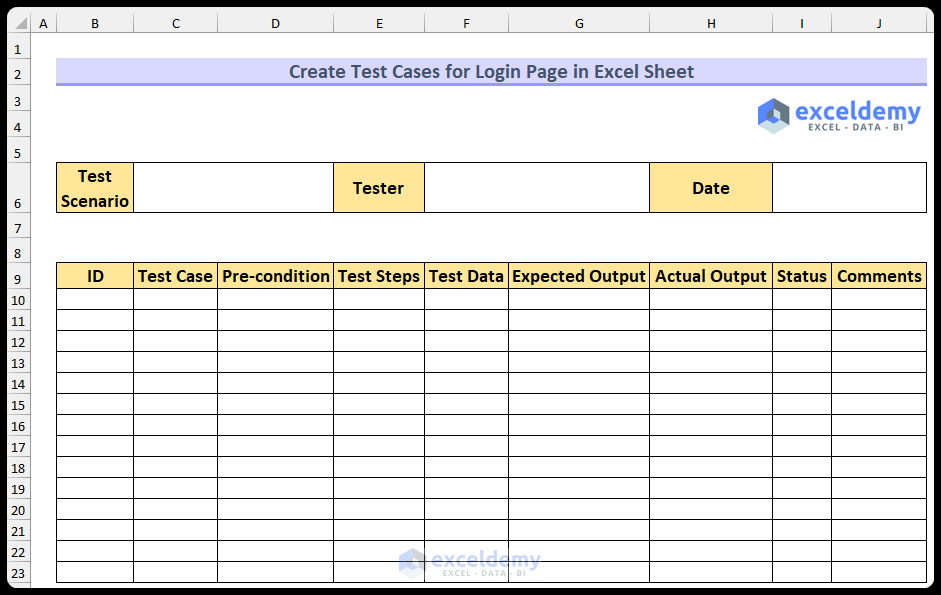Effortlessly Download Excel Sheet Test Cases: A Quick Guide

Test cases are crucial for ensuring software quality. Excel sheets provide an organized way to document these test cases. Here is a quick guide to downloading Excel sheet test cases to streamline your testing process:
Why Use Excel for Test Cases?

- Standardization: Excel offers a uniform format for documenting test cases.
- Collaboration: Teams can work together on the same file, tracking changes and adding comments.
- Automation Integration: Excel data can be integrated with automated testing tools.
Downloading Excel Sheets for Test Cases

Step-by-Step Guide:

1. Identify the Source
- Find the source where the test cases are available. This could be:
- Internal company repositories or knowledge bases.
- Project management tools like Jira or Confluence.
- External testing libraries or online repositories.
2. Export Options
Check the export options available:
- If the source supports direct Excel download, proceed with the download.
- Otherwise, look for alternatives like CSV, PDF, or JSON formats which can be converted later.
3. Download the File
Follow these steps:
- Click on the ‘Download’ or ‘Export’ button.
- Select ‘Excel’ as the file type.
- Choose the desired worksheet and data range if applicable.
- Confirm the download.
4. Conversion if Necessary
Convert the file to Excel if it’s not already in the correct format:
- For CSV files, open in Excel, and save as .xlsx.
- Use online tools or PDF to Excel converters for PDF files.
- JSON can be parsed into Excel using scripts or tools like Power Query.
🚀 Note: Ensure you are using a trustworthy converter or follow your company's guidelines for data integrity.
Organizing Your Test Case Excel Sheets

Templates for Consistency

Using a template ensures uniformity across test cases:
| Field | Description |
|---|---|
| Test Case ID | Unique identifier for each test case. |
| Test Name | Descriptive name of what is being tested. |
| Description | Detailed instructions or objectives. |
| Pre-Conditions | What must be true before the test starts. |
| Steps to Execute | Specific actions to perform during the test. |
| Expected Results | What should happen if the test passes. |
| Actual Results | What happened during the test execution. |
| Pass/Fail | Whether the test met the expected results. |
| Notes/Defects | Any observations or bugs found during testing. |
| Tested By | The name or initials of the tester. |
| Date Tested | Date of the test execution. |

Version Control

Maintain different versions of your test case documents:
- Use naming conventions like “Test_Cases_v1.0.xlsx”.
- Track changes by including a version history or changelog sheet.
Wrapping Up

Downloading and organizing your test cases in Excel helps streamline testing, ensures thorough documentation, and facilitates collaboration. Following this guide, you can make your testing process more efficient, ensuring that you cover all necessary scenarios and track your testing progress effectively.
Can I use Google Sheets instead of Excel?

+
Yes, Google Sheets offers similar functionality to Excel and can be used for test cases. The main advantage is real-time collaboration, but it might require converting files when using specific testing tools.
What if my test cases are in a proprietary format?

+
Use appropriate converters or seek developer support to convert proprietary formats into Excel-compatible formats like CSV or XML.
How frequently should I update test case sheets?

+
Test case updates should align with project milestones, feature updates, or when significant changes in the product occur.
Is there a way to automate test case documentation?

+
Yes, various test automation tools like Selenium or Cypress can generate test case documentation. Explore these tools for features tailored to your needs.



